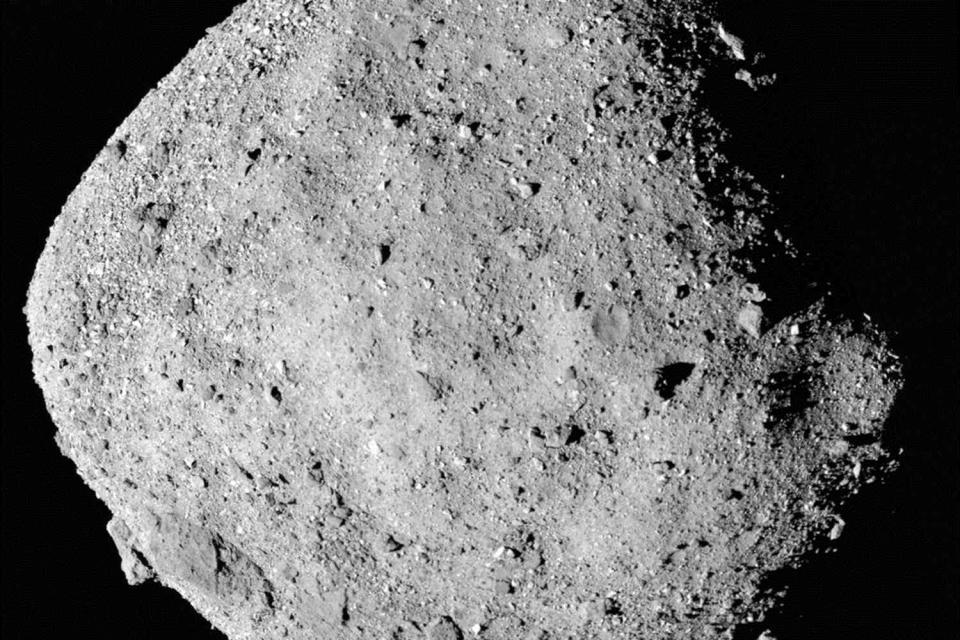Asteroid the Size of Empire State Building Could Hit Earth in Future, NASA Says
A sample from Bennu will return to Earth after a yearslong voyage and land in the Utah desert on Sunday

NASA/Goddard/University of Arizona via AP,
A massive asteroid the size of the Empire State Building could hit Earth in 159 years, and NASA scientists will get their first up-close glimpse of a piece of it this weekend.
The near-Earth object, named Bennu, has been the focus of NASA research — and the OSIRIS-REx (Origins, Spectral Interpretation, Resource Identification and Security – Regolith Explorer) spacecraft — since the asteroid’s discovery in 1999, NASA said.
On Sunday, the first asteroid sample collected in space by OSIRIS-REx will make a controlled landing on Earth, the space agency said.
To successfully deliver the rock sample, spacecraft operators will “need to ensure OSIRIS-REx travels at the right speed and direction to release the sample capsule into the atmosphere, landing it on the U.S. Department of Defense’s Utah Test and Training Range,” according to NASA.
Related: NASA Spacecraft with Asteroid Soil Samples on Board Starts 2-Year Journey Home to Earth
The capsule will hurtle to Earth at 28,000 miles per hour, but its speed will be reduced thanks to parachutes, according to Earth.com. It is scheduled to land in the Great Salt Lake Desert in Utah, the science outlet reported.
NASA will air live coverage of the event at 10 a.m. ET on NASA TV, the NASA app and the agency’s website.
Never miss a story — sign up for PEOPLE's free daily newsletter to stay up-to-date on the best of what PEOPLE has to offer, from celebrity news to compelling human interest stories.
Related: 5 Asteroids Will Pass by Earth This Week — Including 3 the Size of Planes, NASA Says
Studying Bennu is imperative because the asteroid has a slim shot of eventually hitting Earth. NASA said "a new paper from the OSIRIS-REx science team gives Bennu a [one-in-2,700] chance of impacting Earth on Sept. 24, 2182."
Previously, it had "three close encounters [with Earth] in 1999, 2005 and 2011," per the paper.
Bennu's rocks and dust will also give scientists an understanding of how the solar system was formed about 4.5 billion years ago, NASA said.
The space agency first launched OSIRIS-REx in September 2016 from Cape Canaveral Air Force Station, and it reached Bennu in 2018.
Related: NASA Launches DART Mission to Collide with Asteroid: 'Turning Science Fiction into Science Fact'
In 2021, the spacecraft began the long journey back to Earth after spending years collecting soil samples from the asteroid.
After touchdown on Sunday, the rock sample will make another journey — to NASA’s Johnson Space Center in Houston, where the material will be stored, according to Space.com.
OSIRIS-REx, meanwhile, will continue on another mission toward another asteroid — Apophis — which was once thought to be a threat to Earth.
For more People news, make sure to sign up for our newsletter!
Read the original article on People.

